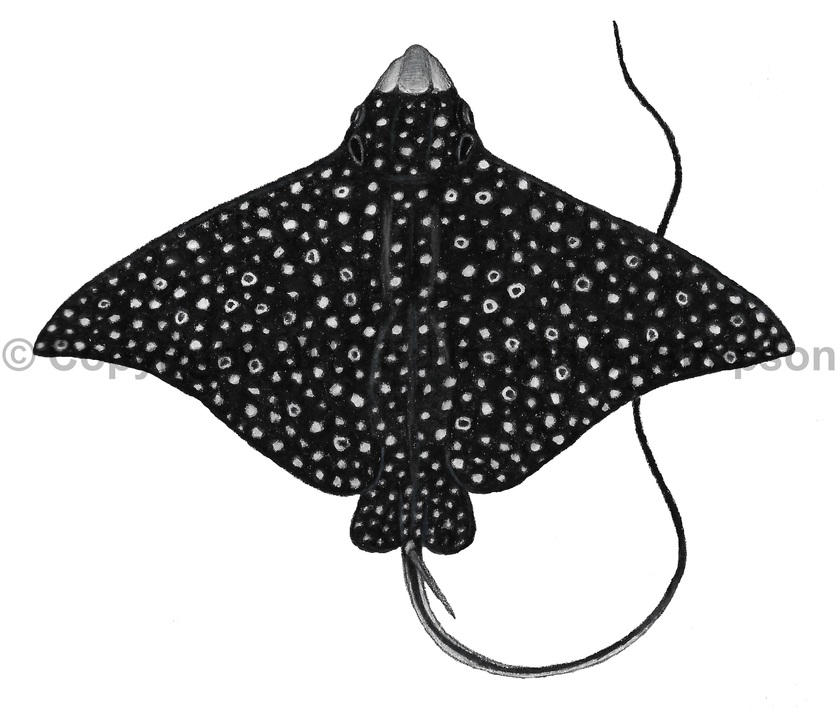
Common Name
Spotted Eagle Ray
Year Described
Euphrasen, 1790
Identification
Disk broad and rhomboidal. Width of disk longer than length of body. Trunk thickened, especially dorsally. Head projects noticeably. Snout fleshy, conical and projecting (about same as mouth width). Mouth subterminal. Nasal curtain with V-shaped notch. Teeth a single row of plates. Spiracles on dorso-lateral side of head. Pectoral fin joins head near eye. Anterior disk margin straight. Posterior disk margin concave. Tips of pectoral fin falcate and pointed. Pelvic fins project beyond rear disk. Tail very long (over 2 times wider than disk) with 1-2 spines at base. Dorsal fin small with a rounded tip. Skin smooth without denticles.
Color
Dorsum black with numerous close-set white spots or rings. Ventrum white, sometimes with gray shading near tips of pectoral fins.
Size
Maximum size to 230cm in width but usually <140cm in width.
Habitat
Pelagic in inshore coastal waters. Swims in open water but commonly feeds on the bottom.
Range
North Carolina to southern Brazil, including the Caribbean Sea and the Gulf of Mexico.
References
Last, P.R., White, W.T., Carvalho, M.R. de, Séret, B., Stehmann, M.F.W & Naylor, G.J.P (Eds.). 2016. Rays of the World. CSIRO Publishing, Melbourne. 790p.
Other Notes
Classified by many authors into it’s own family (Aetobatidae), which can be distinguished by tooth plate morphology and nasal curtain morphology.